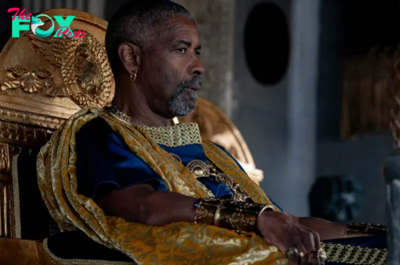Entertainment
4t.Feast of the Seven Fishes: A Tale of Italian-American Tradition and Culinary Evolution
This Christmas Eve seafood feast is an Italian American tradition that dates back to an immigration wave in the 1900s.

Christmastime can be a symphony of sensory delight: the sweetness of a candy cane, the smell of pine, the chime of bells, the glow of string lights-and for some, the sizzle of fish in the kitchen.
The Italian American tradition of the “Feast of the Seven Fishes” has appeared in movies, and recently, in the hit show The Bear. But ask celebrants what that tradition entails, and you’ll get many different answers.
Where did this feast really originate, and how did it become popularized in the U.S.? Why fish, and why are there seven? Here’s the real story of the Feast of the Seven Fishes.
Italian origins
The Feast of the Seven Fishes is a dear tradition to many Italian Americans who enjoy (at least) seven different seafood dishes on Christmas Eve. You might find labor-intensive preparations of baccalà (salted cod fish), calamari fritti with lemon and marinara sauce, stuffed escarole, fried smelt, scungilli (conch) in a chilled seafood salad, and stuffed clams oreganata.
You won’t hear about “festa dei sette pesci” in Italy though, says Michael Di Giovine, professor of anthropology at West Chester University of Pennsylvania and author of Edible Identities. In Italy, the holiday is simply “la vigilia,” “the eve” of Christmas. And fish is really only eaten in Southern Italy on the holiday.
This is because the feast has evolved to be uniquely Italian American over the past hundred years.
At the turn of the 19th century, Italian immigration exploded, numbering 300,000 in the 1880s, jumping to 2 million by 1900. As Italian immigrants moved away from extended family and their children grew and married Americans, the Feast of the Seven Fishes evolved from la vigilia into something much more extravagant. Di Giovine says the feast was a way to differentiate themselves, a marker of identity. It also became a tradition to strengthen bonds with both family present and ancestors past.
Today, there are as many interpretations of the feast as there are participants, Di Giovine says.
Why fish-and why are there seven?

A vast majority of Italian immigrants to the United States were from rural Southern Italy at the turn of the 19th century. When the country was unified in 1861, they had new freedoms from a weakened aristocracy. They came to America because there were jobs (from building railroads to skyscrapers) and mobility. Friends and family found success and brought their loved ones to the U.S.
Some say fish was chosen for the Feast because it was plentiful for impoverished families in Southern Italy. Others say the sea represented Italian Americans’ connection between their old and new homes. Still others say fish was served simply because it’s seen as an aphrodisiac.
Though many families no longer associate the feast with Catholic tradition, there’s likely a religious explanation for the seafood. The first Christians used fish iconography to denote membership. In one biblical tale, Jesus procures a large catch of fish, and promises his disciples an abundance of followers when he commands them to be “fishers of men.” To this day, the Pope wears the “ring of the fisherman.”
Seven is also a holy figure: it’s the number of sacraments and deadly sins. In the Bible, Jesus miraculously feeds a crowd of people with seven loaves and fishes. “Consumed in multiples of seven, then, fish may be a deeply ingrained symbol of sanctifying and revivifying a plentiful group, and of promising continued abundance for posterity,” Di Giovine writes in a 2010 paper on the subject.
Tradition is always evolving
Italian culture is very regional, with small communities specializing in certain foods. North and Central Italy didn’t eat fish on Christmas Eve. The rush of immigrants at the turn of the 19th century were from the South, which has Spanish iNFLuences on the language and food. Fish, olive oil, vinegar, beans, tomatoes and fried foods like pizza fritta (pizza pockets) and zeppoles (donuts) are foods from the Italian South (notably not pasta).
In the 1900s, anti-Italian sentiment was high and Italians from different regions were lumped together by outsiders. Eventually, traditions also became melded together to produce the current Americanized image of pan-Italian food that ranges from pizza to cannoli, which are both regional in Italy.
After World War II, Italians were accepted members of American society. They moved (with everyone else) to the suburbs, their kids went to school with those from other backgrounds, and TV was popularized, homogenizing the population’s taste. Language and religion are lost quickly in this situation, Di Giovine says, and food could be a way to separate yourself that you could choose when to use.
Writer and director Robert Tinnell made a comic in 2004 about his experience with the Feast of the Seven Fishes, which he later made into a 2019 movie. Growing up in North Central West Virginia, he fondly remembers his great grandmother organizing the Feast. After she died, his grandfather and other men in the family took over. That particular masculine domesticity is something that the first Italian immigrants would have also performed out of necessity: men came to America first, without their wives and daughters.
However, knowledge about where to shop, when to prepare, how to cook, the History behind the meal, and family traditions quickly became the responsibility of mothers to pass down to their daughters, Di Giovine says. They are also likely the ones who have the ultimate say in making changes to Recipes. Over time, families often tweak the menu to make things easier, cheaper, more abundant, and more accommodating of dietary restrictions.
“We’re not precious. I do a couple things that would have been on her table,” Tinnell says, referring to his great grandmother. “But then my wife loves seeking out new things. A few years ago, we picked up oysters and set them up outside over open flames; we roasted them in the shells. My family never did that. But I wouldn’t trade the time that I spend with my father-in-law, my brothers, to all the kids—it’s a new thing. And that’s what’s important here… that togetherness and that shared experience.”
-

 Entertainment1h ago
Entertainment1h agoWhat to Know About Denzel Washington’s Gladiator II Character
-

 Entertainment3h ago
Entertainment3h agoChanges Made in New York to “Men Working” Construction Signs
-

 Entertainment6h ago
Entertainment6h agoSuggestions for delivering a POWERFUL OPENING.
-

 Entertainment6h ago
Entertainment6h agoAmerica On CoffeeWe’re simply inviting you to take a timeout into the rhythmic ambiance of our breakfast, brunch and/or espresso picks. We’re completely happy everytime you cease by.BAD DREAMS – TEDDY SWIMS
-

 Entertainment11h ago
Entertainment11h agoRemembering Song Jae-rim: A Look at His Best Movies and K-Drama Performances
-

 Entertainment22h ago
Entertainment22h agoAmerica On CoffeeWe’re simply inviting you to take a timeout into the rhythmic ambiance of our breakfast, brunch and/or espresso alternatives. We’re pleased everytime you cease by.SELF CONTROL
-

 Entertainment1d ago
Entertainment1d agoOrange County Choppers Is Ready For Its Big Comeback
-

 Entertainment1d ago
Entertainment1d agoThe Real Story of Geta and Caracalla, the Roman Brother Emperors in Gladiator II



























